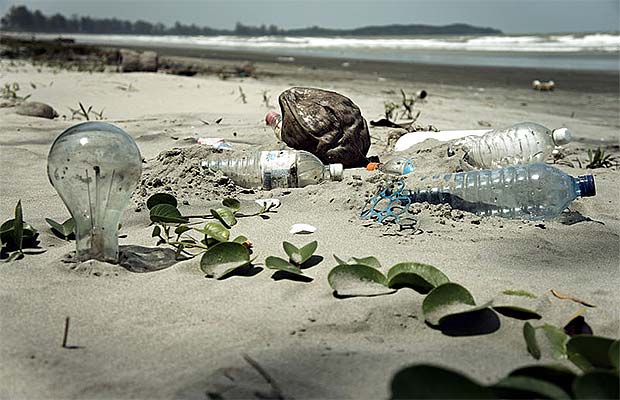It’s no news to anyone that plastic pollution is a significant environmental risk. It’s now common knowledge that there are around 8 million pieces of plastic making their way into our oceans each year.
Of course, the best thing any of us can do is go zero waste. It’s also now possible to support this cause using new technologies like the Swell Investing app. But, even when you take these steps, the figures paint a bleak picture. Even if we managed to clear our acts up completely now, we face the dilemma of the 5.25 trillion macro and microplastic pieces which are already in our oceans.
 Just one more scene of plastic pollution
Just one more scene of plastic pollution
Luckily, some companies out there are trying to tackle the issue at its source. Earlier this year, a Dubai-based marine solutions firm called ‘Ocean Cleanup’ developed and dispatched a 600-meter screen skim in attempts to tackle the plastic currently in the Pacific Ocean. With this, they intend to remove an impressive 50% of the plastic from this area within the next five years. This is a project which has been in the works since way back in 2009, and its success could see similar deployments across our oceans. Of course, this is the first attempt, and we have yet to see whether it will show any real results. As it stands, there has never been a successful clearing of the plastic of our oceans.
Still, the Ocean Cleanup seem fit to get it done when you look at them on paper. They aim to clear plastic from our oceans before it begins to break down, which would make it harder to track and catch. This is a belief which was highlighted by a study published in ‘Advances in Water Resources’ earlier this month. Within, Washington University researcher Nick Engdahl attempted to track movements of plastic microfibers, which are what you get when plastics begin to break down. Engdahl’s initial findings reveal the movements of plastics like these vary depending on everything from the environment to weather conditions, and even the size of the microfibers themselves. It’s easy to see, then, that it would be near enough impossible to efficiently catch something like this in a body of water the size of the ocean. That alone is proof that The Ocean Cleanup is on the right track.
It’s important to remember, though, that this is no easy environmental answer. Teething issues of escaping plastic during the first week after deployment show that there is a lot of work yet to do. The Ocean Cleanup themselves are a not-for-profit who are forever looking for more funding. And, of course, even if their efforts do allow us to clear large portions of ocean plastic, their methods offer a solution rather than an answer to this issue. As such, we still need to take efforts to reduce our waste and encourage our businesses to do the same. Only then can we see clean oceans once more, and put the risks posed by pollution well and truly behind us.